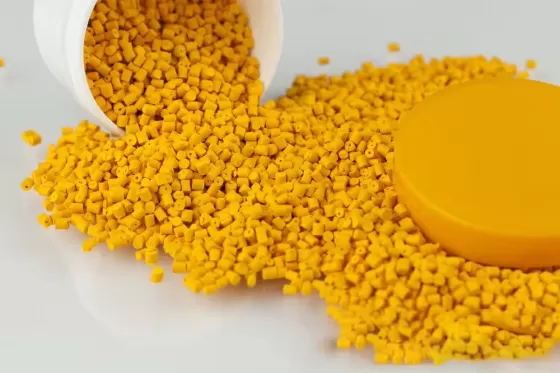

Flame-retardant PE, or flame-retardant polyethylene, is a type of polyethylene material that has been modified by the addition of flame-retardants or by a modification process to improve its flame-retardant properties. Polyethylene (PE) itself is a flammable polymer material with an ultimate oxygen index of about 18%.
In order to improve its safety in areas such as electrical and electronic appliances, communication equipment, automobiles and construction materials, PE often needs to be treated with a flame retardant.
This product is made of polymer resin as base material, flame retardant, antioxidant and other additives through mixed plasticizing and granulation. It does not contain harmful substances such as heavy metals, and has excellent mechanical properties, electrical properties and wide processing temperature margin.
Flame Retardant PE (Polyethylene) is a material whose flame retardant properties are improved by adding flame retardants. Since pure PE has high flammability, adding different flame retardants can make it safer in certain applications. The application areas of flame retardant PE include automobiles, construction, electronics and cable manufacturing, etc., which have high requirements for the fire resistance of materials.
This series of flame-retardant XLPE materials is designed for a variety of electronic wires, including types 3385, 3386 and 10368, as well as flat and high-temperature equipment wires that need to meet UL VW-1 standards.
Key Features and Benefits
Excellent flame retardancy
Achieving UL 94 V0 rating enables electronic wires, flat cables and high-temperature connecting wires to meet stringent UL VW-1 flame retardant test requirements.
High temperature resistance without irradiation
Supports UL temperature ratings of 105°C and 125°C in one extrusion without irradiation. This greatly reduces production costs and shortens lead times for electronic wire products.
Excellent electrical properties
Fully meets 3.5KV spark test during extrusion.
Minimize wire splices and increase product yield per reel.
Easily pass UL 1581, UL 758 and UL 62 voltage and insulation resistance tests.
High extrusion efficiency
Runs at 180-250 meters per minute on standard PVC screw machines, providing a smooth, defect-free surface with minimal drooling, particles, ridges or dents.
Excellent printing and coloring properties
Provides vibrant and consistent color matching for a wide range of hues with crisp print quality.
Optimized processing properties
Delivers an ideal hardness range (95A-98A), heat shrinkage, and toughness to meet end-customer needs for tinning, wire merging, stripping, and other processing requirements.
Lightweight and cost-effective
Low specific gravity (1.06–1.08) provides 34%–42% more wire per kg compared to common flame-retardant XLPE (1.40–1.50).
Reduces material costs while fully complying with UL standards and improving production efficiency.
| Testing items | VALUE | Typical value | UNIT | Method |
| Density | ≤1.35 | 1.28 | g/cm3 | GB/T 1033 |
| Tensile Strength | ≥12 | 15.8 | MPa | GB/T 1040.2 |
| Elongation At Break | ≥200 | 250 | % | GB/T 1040.2 |
| Heat Deterioration(110±2℃,168H) | ||||
| Tensile Strength Retention Rate | ≥70 | 105 | % | GB/T 2951.12 |
| Elongation At Break Retention Rate | ≥70 | 90 | % | GB/T 2951.12 |
| Impact Brittle Temperature | ≤15/30 | 0/30 | 个 | GB/T 5470 |
| Volume Resistivity | ≥1.0×1012 | 1.5×1013 | Ω·m | GB/T 1410 |
| Dielectric Strength | ≥20 | 30 | MV/m | GB/T 1408.1 |
| Thermal Shock | No cracking | No cracking | / | GB/T 32129 |
| Anti UV | ||||
| Change Rate Of Tensile Strength | ≤15 | 10 | % | UL1581 |
| Change Rate Of Tensile Strength | ≤20 | 14 | % | UL1581 |
| Change Rate Of Elongation At Break | ≤15 | -15 | % | UL1581 |
| Change Rate Of Elongation At Break | ≤20 | -16 | % | UL1581 |
| Single Vertical Combustion | Pass | Pass | / | IEC 60332-1 |
| Carbon Black Content | 2.6±0.25 | 2.7 | % | / |